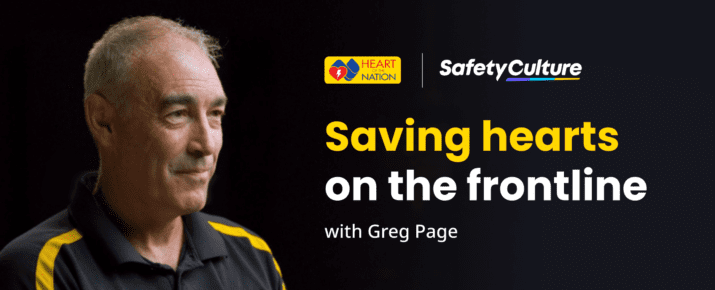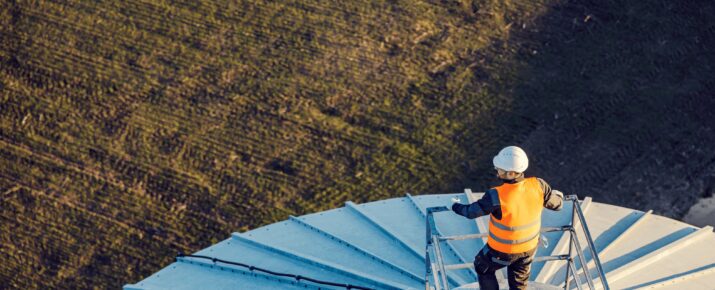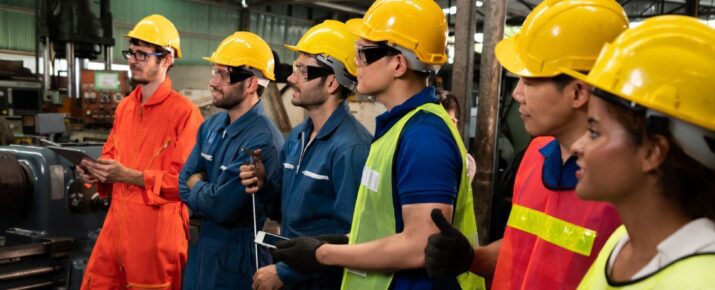10 years of building towards better
Ask The Experts | By | 16 Feb 2022 | 8 minute read

10 years ago, the world’s largest checklist app was born.
But SafetyCulture (formerly iAuditor) is far more than a box-ticking exercise.
Today, we’re an operations platform that powers 700 million checks per year, 50,000 lessons per day and millions of corrective actions.
Our product is workflow. For a decade, we’ve been building on it, bettering it. Finding simple steps that raise the bar. And so, we continue to uncover the building blocks of best practice and great teams. We know that we’ve got a ways to go still, but we also want to recognise how far we’ve come!
To celebrate this significant moment, we’re here with Founder and CEO Luke Anear to open up the (virtual) floor to those who know us best and have helped us get to where we are today. Our tech community, investors, advisors, and staff have submitted their questions and Luke will shed some light on the lessons we’ve learned.
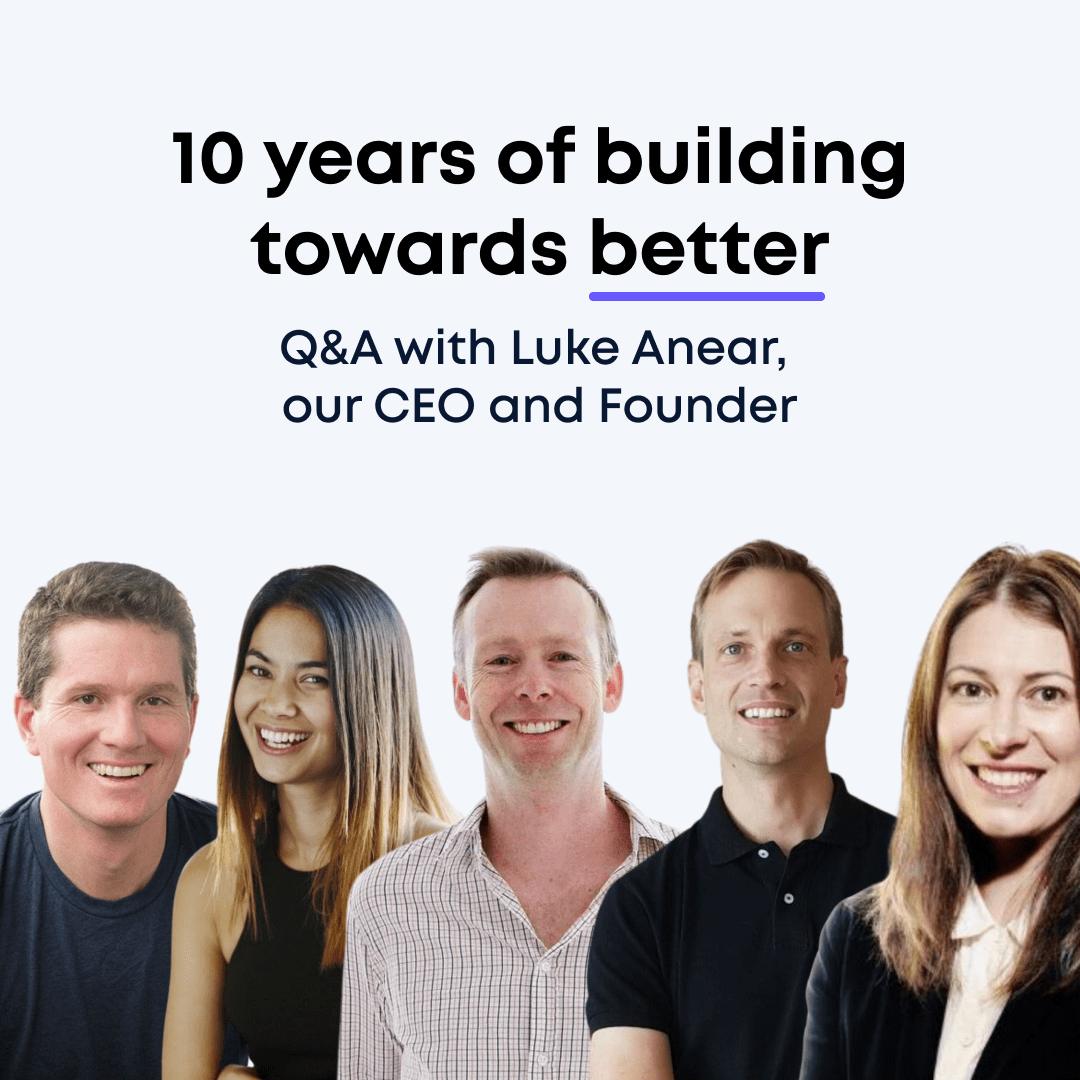
You’ve always been passionate about building such a great product that people discover it, bring it into their teams, and champion it to be used throughout their organisation. How has this mission evolved as SafetyCulture has become so successful, and the customers so much bigger?
— Rick Baker, Co-Founder, Blackbird Ventures
Our mission hasn’t changed, not really. You’ll hear me say it a million times, but customers are at the heart of everything we do. So even as we’ve grown as a business and expanded our customer base, our core purpose has remained the same as those days in the garage. We want to help working teams get better every day.
What has evolved is our level of ambition and the broadening of our remit. It’s about getting people to think about how to solve problems at scale; getting people to think big enough. We’re accelerating our product roadmap. We’re also doubling down on our freemium efforts as we’re increasingly confident in the value our products deliver. Just a few months ago, we discovered one of our new free users was a team leader at NASA. We know that if you can drive that initial traction, the customer base and product loyalty will come.
While the customers are getting bigger, the challenges they’re facing often remain quite similar so we’re staying focused on building an incredible product to support businesses big and small.
If you could see the world achieve any goal in your lifetime, what would it be?
— Melanie Perkins, Founder and CEO, Canva
In order to find an incredible solution, you first have to ask an incredible question — and Mel, that’s a massive one. I’d say free health and education. Now more than ever, we see how crucial this is.
Health systems are being bolstered globally and still, are falling short. Adult education remains a global problem. In almost one-third of countries, fewer than 5% of adults aged 15 and above participate in education and learning programs. Everyone should have access to free, high-quality education and healthcare. Until we can provide the basic human rights for everyone in our society, what have we really achieved?
The Townsville clock tale is the stuff of SafetyCulture legend. For all of us that joined recently, what’s one thing you miss most about the garage days?
— Julian Nicholls, Regional Marketing Manager, SafetyCulture
The first thing that comes to mind is the close friendships we all had with each other. It’s the kind of camaraderie that comes when everyone is in the trenches together, getting it done. Oh, and I definitely miss the nerf gun wars. I think we’ll open the new Foveaux Street office with one, what do you reckon?
But seriously, back in the early days my entire job was dedicated to living and breathing our product. That sort of depth and intensity is difficult for me to achieve now that we’ve scaled to a company of 600+. When we were first starting out, we lived and died by our next product update. Everything hinged on getting direct feedback from customers and executing it just right. It’s hard to top that sort of hustle. So if you’re in that phase right now, enjoy it while you can!
Congratulations on the amazing journey so far. On your journey, how have you managed risk as the business has scaled over the years?
– Hanno Blankenstein, CEO, Unleash Live
The challenge for us has always been to innovate at a rate that allows us to leverage the best opportunities we identify. And this always involves risk. I believe in pushing boundaries to stay ahead of the curve and sometimes you need to run through a barrier or two to make it happen. More often than not, it involves the unknown. It isn’t about perfecting something in the now. Risk is a byproduct of always asking yourself what comes next. And we’re always wary of the opportunity cost of not doing something great. You want to take risks and innovate, and if things break a little bit, well, that’s normal. It’s better than standing still. That’s where the real risk lies.
Of course, you don’t want to break things to the point it has a negative impact on your customers. So it’s a learning curve to figure out how to manage the risk you take on. It’s why we were so excited to invest in companies like yours. This sort of AI will help businesses keep one step ahead and navigate the challenges that come with growing a business
It’s your travel buddy here! If you could go back in time to when you were my age and give yourself a piece of advice, what would it be? Other than picking up a racket earlier in life…
— Thanasi Kokkinakis, Australian Open Doubles Champion, SafetyCulture Ambassador
Sure, playing tennis and travelling the world would be a bit more glamorous. But since that ship has sailed… I’d say find what you love to do and fully send it!
Life’s just too short otherwise. Work with great people and make sure what you do leaves the world better than when you found it.

How do we get the next generation of talent excited about companies like yours?
— Kate Pounder, CEO, Tech Council
I think there’s a lot to be said about the why of work. I’d tell the next-gen of tech talent, don’t fall for the shiny allure of big money with shallow purpose. Instead, focus on the value that comes from connecting what you find highly meaningful and what you spend time doing. The irony is that if you forget about the material things and focus on helping people in a meaningful way, the rest of it will come.
I think young people are increasingly realising this — and so are companies. Talented young people want to have an impact. They don’t want to slave away for years to get to the top, being a tiny cog in a massive machine. Companies like SafetyCulture are great for that because there’s a clear driving force from day dot and you can get stuck into it, straight away. We see new starters at SafetyCulture driving huge projects and taking out top prizes in company-wide hackathons. It’s a place where you can see your hard work make a direct impact.
What’s your most memorable customer story in the last 10 years? What was the impact for the customer?
— Alex Brooks-Sykes, Director of Sales, SafetyCulture
The impact we’re having on our customers is increasing every day and a few stories come to mind here. As our platform has evolved we’ve been able to help organisations at scale, whether it’s the Australian Open deploying our platform to put on their biggest and best event yet or the UN using our tech to facilitate training programs in remote, often war-torn parts of the world.
But it’s also about making a difference on a personal level. A while back I had a customer in Canada ring me up and tell me his story. He and his wife had raised two children with disabilities and he felt his life was a failure. As the SafetyCulture (formerly iAuditor) champion at his workplace, he had found meaning and purpose in his life and his work. He was a mentor and helped many teams operate at a higher level. He cried as he told me how much SafetyCulture had changed his life. I never imagined us having that sort of impact on people, but it’s nice to know we do.
Building SafetyCulture from scratch and without any existing business models to replicate would have been very hard. What motivated you to push on during the difficult times?
— Jon Teo, Head of Lifecycle, SafetyCulture
Before SafetyCulture (formerly iAuditor), I was Tony Robbins’ videographer for four years, flying around the world meeting all sorts of different people, and I think that made me put things in perspective in terms of what is important to me and how everyone has to overcome adversity. What I learned then was that even in those hard moments, nothing is permanent, and that no matter how good or bad something is, you only have to change one or two inputs and the situation will improve. Even as we were pushing to build the business, I remember the emotion that underpinned starting SafetyCulture (formerly iAuditor) in the first place.
There were a couple of things that have shaped the business — some very real tragedies. I was shaken as a Workers Compensation Private Investigator, learning about a 36-year-old fellow who had committed suicide after getting injured at work, and we also saw a 19 year old boy die in a house in Penrith putting roof insulation in. I didn’t start this company to make a lot of money. I didn’t do it to be a CEO. I created SafetyCulture to solve a problem that I cared about.
Looking back over the years, what was one defining event or moment you’re most proud of?
— Alex Riesberg, Senior Customer Success Manager, SafetyCulture
I’ve had the benefit of time in this business so trust me when I say there have been many! Most recently, I look back to 2019 when the team was rewarded for the effort they had put into building the business with me. It wasn’t just about numbers, it was about the people involved. Everyone who’d been here for more than three years got the chance to cash out some of their vested equity. People were sending me photos and sharing their stories about how they’d paid off their mortgage and have more children. With so much uncertainty in 2020, we wanted to provide our team with another chance to realise some of the wealth they built while working at SafetyCulture. We feel very fortunate to have been able to support our employees during such a turbulent time.
And don’t get me started on our customers. It’s an abstract thing until you go out and actually talk to our customers; experience it for yourself. Only then can you can see the impact our platform has everyday.
We have a great relationship. What makes for a good partnership between founders?
— Darren Winterford, Founder & CEO, EdApp by SafetyCulture
Firstly, we care about each other, and we trust each other. We have a common goal and we bring humility to work each day and put the success of the business ahead of our ego. Great relationships are built out of mutual trust and respect. We have that, and together we can achieve much more than we could on our own. I want to empower people by giving them context, rather than control. Having alignment on values and then getting out of people’s way is the key to scaling a business.
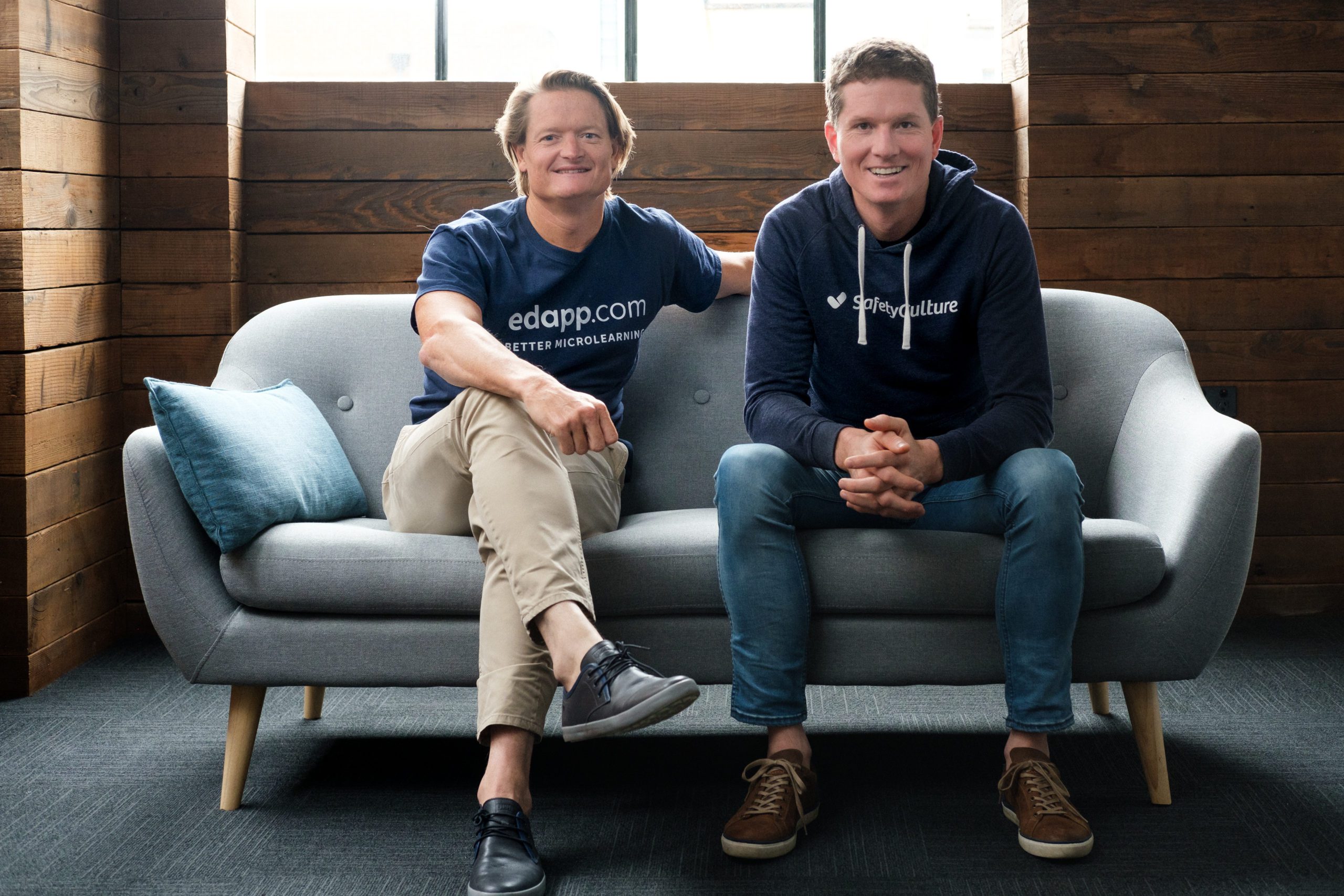
What’s next for SafetyCulture and its technology?
— Kristina Krause, Product Marketing Manager, SafetyCulture
2022 will be the year that defines SafetyCulture. I have never seen us start a year with so much momentum and capability. Granted, every year is bigger than the last, but our vision of bringing multiple products into one operational platform is about to become obvious to all of our customers. We now have inspections, training, issue reporting, team communications, actions and insurance. With asset management, worker credentialing, telematics, sensor feeds and a marketplace for workplace consumables on their way, this year will be the defining year of SafetyCulture.
There are always going to be challenges thrown at us, and we have a great team in place to rise to the challenge. I say this every year, but this is going to be the biggest year SafetyCulture has ever had and it’s true. The opportunity continues to get bigger and it’s on us to deliver on it and I’m more excited than ever to get after it.
Important Notice
The information contained in this article is general in nature and you should consider whether the information is appropriate to your specific needs. Legal and other matters referred to in this article are based on our interpretation of laws existing at the time and should not be relied on in place of professional advice. We are not responsible for the content of any site owned by a third party that may be linked to this article. SafetyCulture disclaims all liability (except for any liability which by law cannot be excluded) for any error, inaccuracy, or omission from the information contained in this article, any site linked to this article, and any loss or damage suffered by any person directly or indirectly through relying on this information.
